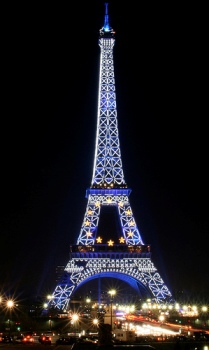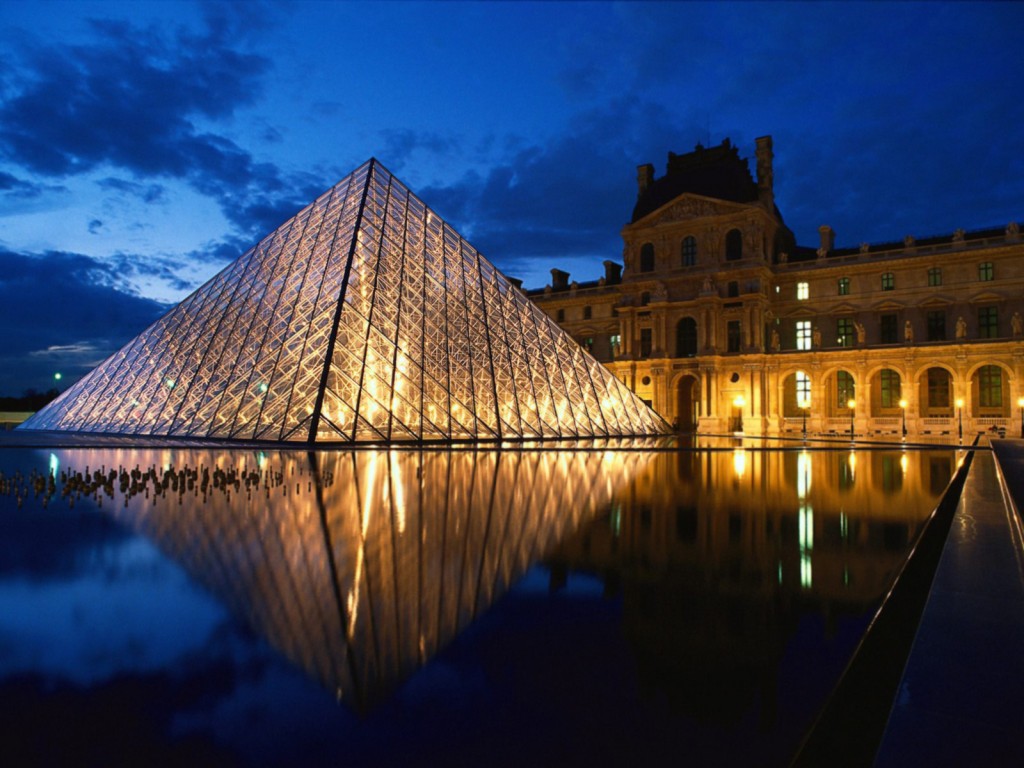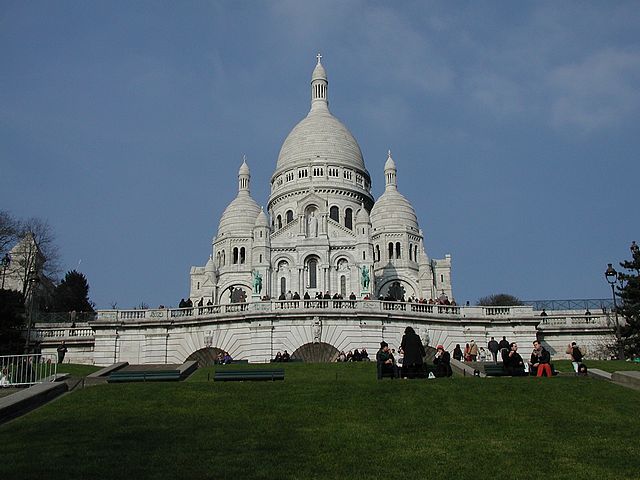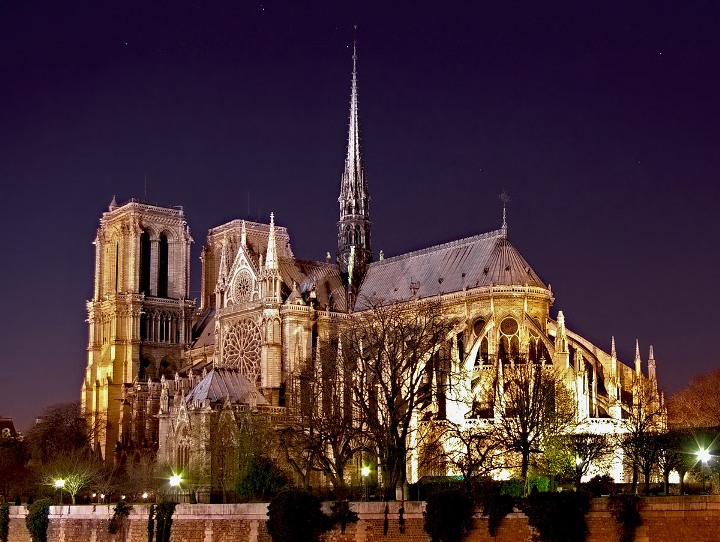Paris is perhaps one of the most well-known cities in the world. It is instantly recognizable from images of the Eiffel Tower, the Pyramid of the Louvre or even the little red windmill atop the Moulin Rouge. It is an expansive city, so full of monuments and museums that it is hard to take it all in with a single visit. Fortunately, there are many city tours in Paris that make seeing everything as easy as possible. Despite their reputations as touristy sights, there are certain things that you simply cannot miss on a trip to Paris.
Speak French
First, some advice: Parisians are famous (deservedly or not) for being rude to tourists. The best way to avoid this is by learning a little bit of French. The difference that can be made with a simple Bonjour! as you enter a shop is enormous. The locals notice the effort being made and will be much more willing to help you and they might even reveal that they do, indeed, speak English. Here are a couple phrases to get you started:
| Hello. (formal) | Bonjour. (bong-ZHOOR) |
| Please. | S’il vous plaît. (seel voo PLEH) |
| Thank you. | Merci. (merr-SEE) |
| You’re welcome. | De rien. (duh RYEHNG) |
| Yes. | Oui. (WEE) |
| No. | Non. (NOH) |
| Excuse me. | Excusez-moi. (ehk-SKEW-zay MWAH) |
| I can’t speak French [well]. | Je ne parle pas [bien] français. (zhuh nuh PAHRL pah [byang] frahn-SEH) |
| Do you speak English? | Parlez-vous anglais ? (par-lay VOO ahng-LEH?) |
| Where is _____? | Où se trouve _____? (oo suh tr-OO-v _____) |
Now that you have mastered a little French, it is time to take off and visit some of the most beautiful places in the world.
Eiffel Tower

Now a famous landmark, the tower was never intended to be permanent. Originally built as a temporary structure for the 1889 World’s Fair, meant to symbolize science and industry, it was far from popular at first. It was considered an eyesore and generally reviled. One Parisian artist, Guy de Montpelier, apparently hated it so much that he would eat lunch in the tower every day – because that was the only place in the city where you couldn’t see it!
Today is a different story. Last year over 7 million people ascended the tower (which is, incidentally, more than three times the population of Paris) making it the most popular paid monument in the world. While some people would call a visit to the tower clichéd, what trip to Paris would be complete without climbing this iron behemoth? The observation platforms provide spectacular views of Paris and, assuming you have a few hours to throw away waiting in line, is well worth the visit.
Musée du Louvre
Instantly recognizable from the glass pyramid that dominated the square, the Louvre is one of the world’s largest galleries and by far the most visited art gallery in the world. Well worth a visit for art lovers, Egyptologists, fans of Ancient Greece and Rome and, of course, Dan Brown fanatics.
The museum was opened in 1793 with an impressive collection of 537 paintings. This number grew in leaps and bounds over many years and today houses so many pieces that less than 10% of the collection is on display. The museum is divided into eight curatorial departments: Egyptian Antiquities; Near Eastern Antiquities; Greek, Etruscan, and Roman Antiquities; Islamic Art; Sculpture; Decorative Arts; Paintings; Prints and Drawings.

No matter your commitment, give up on the idea of seeing it all. The museum is so incredibly vast that attempting to view all 35,000 pieces on display (out of a total of 380,000) would take a very, very long time. A guided tour is the best way to make sure you catch the major works within a reasonable amount of time.
Montmartre
In the 19th century, thanks to its position just outside the city limits and therefore exempt from Paris taxes, the hill of Montmartre (Butte de Montmartre) became a popular drinking area. The local nuns made wine and the local drinkers made merry. Beginning in the mid-19th century and continuing well into the 20th century Montmartre was the centre of the Parisian bohemian scene, with such famous contemporary artists as Toulouse-Lautrec, Vincent van Gogh, Salvador Dali and Pablo Picasso. The elaborate and risqué cabaret clubs Moulin Rouge and Le Chat Noir provided a noisy backdrop to the drinking and revelry.
Today, despite the massive influx of tourists, Montmartre still retains its small village feel and, by night, its bohemian atmosphere (although it has been somewhat watered down since its absinthe-fuelled hey-day). It is beautiful district to amble around in and there are many cute little cafés which, despite the exorbitant prices, are a lovely place to sit and enjoy a coffee. Some sights worth visiting are the Montmartre cemetery, which is the final resting place of many esteemed artists and writers, and the Basilica du Sacré-Coeur (see below)
Basilica du Sacré-Coeur

Sitting atop the Butte de Montmartre, the Basilica du Sacré-Coeur was built as penance for the excesses of the Second Empire under Napoleon III. The construction of this brilliantly white monument was funded by contributions from Parisian Catholics, and today is one of the most characteristic landmarks of Paris.
The Basilica du Sacré-Coeur is beautiful inside and out – make sure to check out the mosaic, Christ in Majesty, one of the largest in the world – but perhaps the best thing to see is outside, looking away from the basilica. Thanks to its position perched at the highest point in the city, it provides a fantastic and breath-taking panoramic view of Paris.
Notre Dame
Alongside the Seine in the heart of Paris is perhaps the finest example of French Gothic architecture in the world – the Notre Dame cathedral. Built over two centuries, it is the work of numerous architects which can be seen from various styles that adorn the front and the towers.

As a powerful symbol of French Catholicism, it was often the target for those who quarrelled with the Church. As a result, the cathedral stands as a testament to the tumultuous history of France. It is the most visited site in France, with over 10 million people crossing its threshold every year, and with good reason. The cathedral can accommodate more than 6,000 worshippers at a time.
Climb the 422 twisting steps of the North Tower to see a spectacular view of the city alongside the church’s most frightening gargoyles.
Château de Versailles
About half an hour from the city centre lays the old royal palace of Versailles. Formerly the site of absolute power during the Ancien Régime of the 17th and 18th century, it is now an immensely popular tourist attraction.

The palace building is an enormous structure; 580 metres long and a monument to the power and wealth of the former French monarchy. One room to see is the Hall of Mirrors – a 75m long ballroom flanked on one side by 17 enormous mirrors and on the other by an equal number of windows that look out over the gardens and sunset. This hall was the site of the signing of the Treaty of Versailles, one of the major peace treaties following the conclusion of World War One. It is still in use for some formal state occasions.
The beautiful palace and stunning, expansive gardens make this an ideal day trip from the city. Whether you want to visit the various exhibitions on display, walk around the 800 hectare gardens or rent a boat to row around the large artificial lake, make sure you take in this magnificent sight.
This is just a small sample of the breadth and width of things to do and see in Paris. So put on your walking shoes and get busy exploring!


